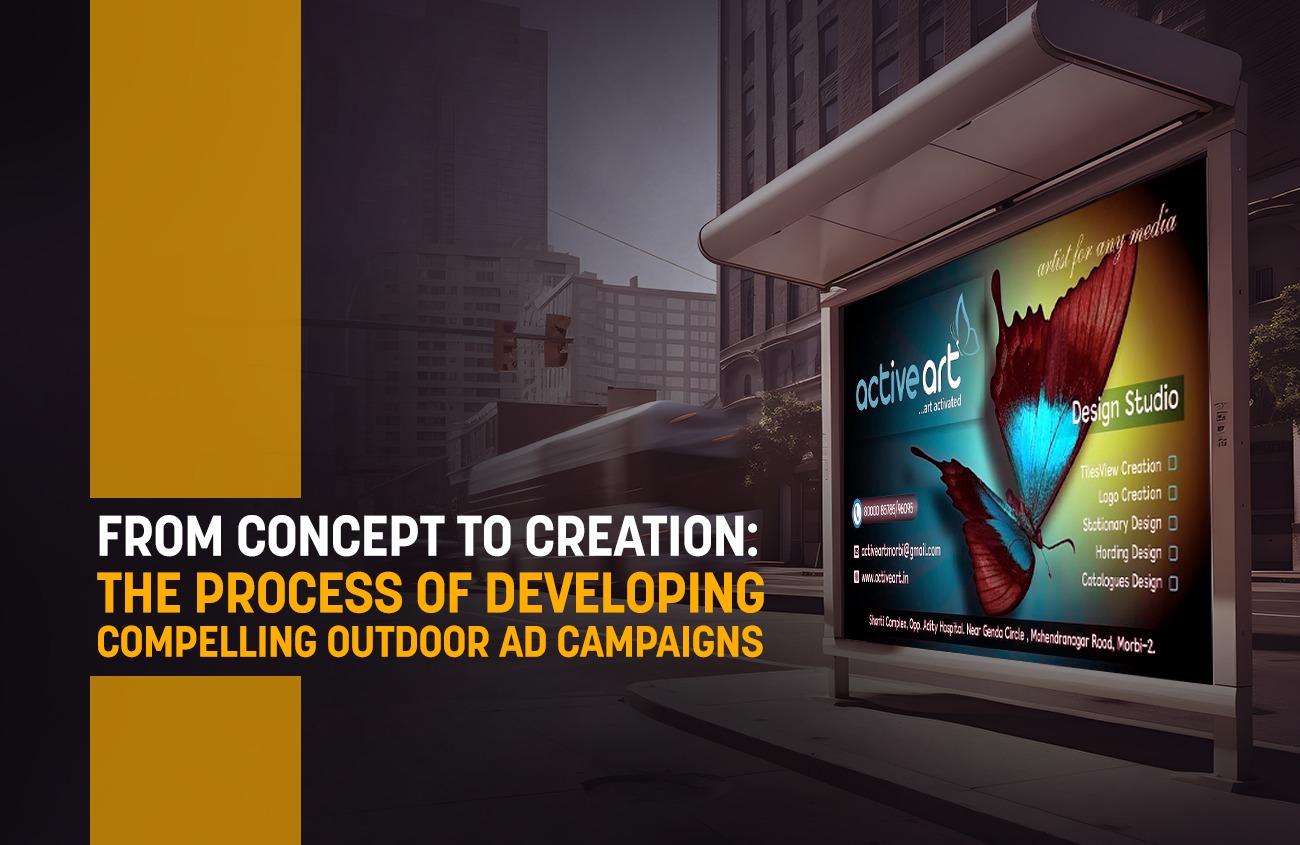
1.Understanding the Audience and Setting Objectives
Every successful ad campaign starts with a deep understanding of the target audience. Who are they? What are their needs, desires, and pain points? What resonates with them? Answering these questions lays the foundation for crafting messages that will resonate with the intended audience.
Setting clear objectives is equally crucial. Whether the goal is to raise brand awareness, drive sales, or promote a new product, defining specific, measurable objectives provides a roadmap for the campaign's success.
2.Research and Insights
Once the audience and objectives are defined, it's time to gather insights that will inform the creative direction of the campaign. This involves researching market trends, competitor strategies, and consumer behavior patterns. By analyzing data and identifying opportunities, advertisers can tailor their messages to stand out in a crowded landscape.
3.The efficiency of outdoor advertising
The capacity of out-of-home advertising to reach a wide range of people in busy locations is what makes it so powerful. OOH advertisements are an extremely effective method for brand exposure since they cannot be ignored, in contrast to digital commercials that may be avoided or blocked. Furthermore, OOH advertising gives marketers the freedom and creativity to customize their message for certain audiences and places, increasing impact and relevance.
4. Research and Insights
Once the audience and objectives are defined, it's time to gather insights that will inform the creative direction of the campaign. This involves researching market trends, competitor strategies, and consumer behavior patterns. By analyzing data and identifying opportunities, advertisers can tailor their messages to stand out in a crowded landscape.
5. Ideation and Conceptualization
With a solid understanding of the audience and market insights in hand, the creative process begins. Brainstorming sessions, mood boards, and concept development workshops are all part of the ideation phase. Here, creativity reigns supreme as teams explore various ideas and visual concepts that align with the campaign objectives.
6. Design and Execution
Once a concept is chosen, it's time to bring it to life through design and execution. This involves collaborating with graphic designers, copywriters, and production teams to create visually stunning and impactful assets. From selecting the right colors and fonts to crafting compelling copy and choosing the perfect imagery, every element plays a crucial role in capturing the audience's attention.
7.Choosing the Right Channels and Locations
in outdoor advertising, location is everything. Whether it's a busy urban street, a highway billboard, or a public transit station, selecting the right channels and locations can significantly impact the campaign's effectiveness. Factors such as foot traffic, visibility, and demographics must be taken into account when choosing where to place ads.
8.Evaluation and Enhancement
The labor doesn't end when the campaign is online. Its effectiveness must be continuously measured and monitored in order to make any necessary improvements. Key performance indicators (KPIs) that reveal important details about the campaign's return on investment include impressions, engagement rates, and conversion metrics. Advertisers can maximize outcomes by optimizing their campaigns in real-time by examining this data.
9.Adaptability and Flexibility
The landscape of outdoor advertising is constantly evolving, influenced by technological advancements, cultural shifts, and changing consumer behaviors. Advertisers must remain adaptable and flexible, ready to pivot their strategies and embrace emerging trends to stay relevant and competitive. By staying agile and responsive to changing dynamics, advertisers can maximize the impact of their campaigns in an ever-evolving marketplace.
10.Emotional Appeal and Storytelling
Emotions play a powerful role in driving consumer behavior. Effective outdoor ad campaigns tap into human emotions by telling compelling stories, eliciting laughter, awe, or nostalgia, and creating a genuine connection with the audience. Whether it's through humor, empathy, or inspiration, ads that evoke strong emotions are more likely to leave a lasting impression and drive action.
11.Sustainability and Environmental Responsibility
In an age of heightened environmental awareness, advertisers are increasingly incorporating sustainability into their outdoor ad campaigns. Using eco-friendly materials, opting for digital displays powered by renewable energy, or promoting messages that resonate with environmentally conscious consumers can enhance the campaign's appeal and align with the values of the target audience.